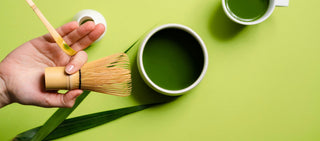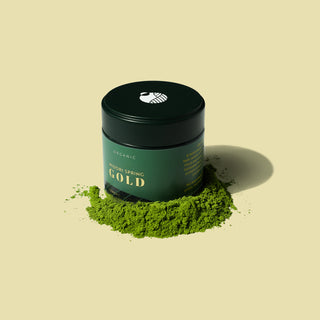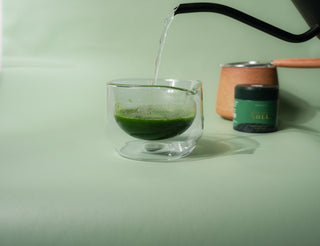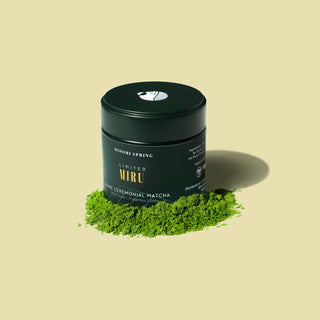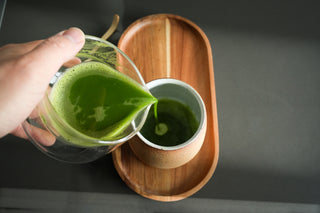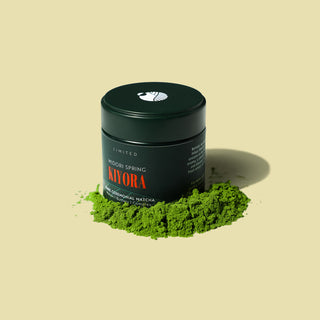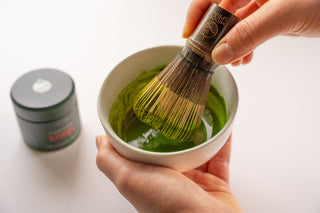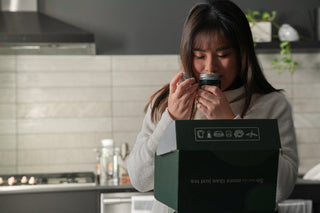The chasen, or matcha whisk, is an indispensable part of any tea ceremony. It doesn’t matter whether making your morning tea or trying out the tea ceremony. If you want good matcha, you need to have a good chasen. This guide will help you choose the right one for the job.
Tea and Tea Ceremony in Japan
The tea tradition in Japan dates back to the Nara period in the 8th century, when Zen Buddhist monks introduced the tea ceremony from China. What started as a religious austerity practice to stay awake while meditating became a huge social status marker by the 14th century. Now you can find matcha lovers all over the world, not just in China and Japan.
Know your Chasen
You might think that bamboo tea whisks are all the same, but they’re not.
The prongs on every chasen are carefully formed, shaved and placed so that they can properly interact with the tea, smoothly mixing the matcha with the water. Chasen can have anywhere from 16 to 120 prongs.
The higher the prong count chasen are used to make thinner tea, and the ones with the lowest prong count are used to mix the thicker tea. The goal is to mix and aerate the tea for the perfect foam density and smooth texture.
Properly mixed matcha is micro-aerated to a creamlike consistency and sweetness that’s impossible to get without using the traditional tools.
Here’s a quick guide to help you pick the right chasen for you.
Chasen types and Usage
|
Low prong chasens Prong count: 16-48 prongs |
 |
Usage: Thick matcha (called koicha), with a savory umami flavor profile. If you’re comparing chasens, it’s easy to mistake one with a lower prong count as being a budget model, but that’s not the case. Chasens with 16 to 48 prongs are used to make koicha matcha, or thick matcha. This style may not be everyone's preferred daily drinking matcha, but rather a thick, strong tea that’s part of the Japanese tea ceremony. Koicha has a stronger umami (savory) taste and takes a little more effort to whisk into frothy matcha goodness because there’s less surface area to work with.
|
|
Moderate prong chasens Prong count: 48-80 prongs |
 |
Usage: Both thick and thin matcha (called koicha and usucha), makes a nice, thick foam and a creamy brew. Most middle of the road chasen come with 64 prongs, although you can sometimes find them with 62. This whisk can work with any style matcha you’re preparing, from koicha to usucha. Remember that the more prongs a chasen has, the more smoothly it mixes the matcha powder. This is the chasen you want for every day matcha.
|
|
High prong chasens Prong count: 80-120 prongs |
 |
Usage: Thin matcha (called usucha), makes a creamy, sweet, frothy brew that’s velvety and delicious. These are by far the most popular chasen; we all love the creamy, frothy umami tea created by using this whisk. This style is meant more to properly incorporate and aerate thin tea. The higher count of thin, delicate bamboo prongs is perfect for creating the maximum amount of microbubbles so that your usucha is silky, smooth and has the perfect dense head of foam.
|
Ready to become a matcha master? Click here for our step-by-step photo and video guides on how to whisk up the most delicious cup of creamy, aromatic matcha!
Takayama Chasen: The Rolls Royce of Matcha Whisks
While all proper chasen are made of a single piece of bamboo (more on that later), and formed in roughly the same way, there are still some real gems in the chasen from functional to amazing.
A true Takayama chasen is a work of functional art. The design dates back the early 14th century, during Japan’s Muromachi period.
Takayama chasen are made following a process that can take upwards of two years from beginning to end, and each of the eight steps are meticulously done by hand. This care in crafting results in a tea whisk that perfectly mixes the precious matcha powder with the water
Although you don’t need a Takayama chasen to make your matcha, they are beautiful pieces for collectors and fantastic gifts for tea lovers. If you’re a tea hobbyist, this is the chasen you hope to buy someday.
Budget and Modern Alternatives to Bamboo Chasen
If you don’t have room in your tea budget to buy a traditional kogei matcha whisk, don’t worry... you still have other options.
A big part of the expense of a Japanese chasen is the time-intensive creation process, and the other is the material. Japanese bamboo is good quality, with thicker walls and smoother fiber, which translates to a longer usable life. But it also translates to a greater price point, which might hold some tea lovers back.
Option 1: Chinese bamboo chasen.
Chinese bamboo is a good, but less expensive material, and it’s made along similar lines. A Chinese bamboo chasen will let you have that hand-frothed matcha experience. This is a good option for entry-level matcha lovers who want to stay traditional without breaking the bank.
Option 2: Metal whisks
A metal whisk, no matter how small, isn’t meant to incorporate solids into liquids the way a fine-pronged bamboo whisk is. It does a good job of incorporating the matcha into the water, but it’s difficult to get it to froth properly.
Option 3: Milk frothers/electric whisks
If you're looking for convenience or don't want to (or can't) use a bamboo whisk, you can go the high-tech route and use an electric one.
Be careful here: electric whisks are usually meant to froth milk or blend lattes and may be too powerful to use to make your matcha, so you should choose one that has lower RPMs for the best results.
Note: an electric frother will whisk your matcha to a creamy consistency, and if you froth your matcha a few times, you’ll get a nice head of foam that’s almost as thick as if you’d used a bamboo chasen. However, the flavor profile of your brew will be different.
Electric frothers tend to create a delicately floral brew, while traditional chasen have a creamier mouthfeel and a more umami, vegetal flavor.
Choose your chasen wisely.
Your chasen is going to be the second most important part of your matcha experience. You literally cannot make tea without it. Now that you know more about how to choose a good bamboo whisk for your matcha, you can enjoy your tea experience to the fullest.
